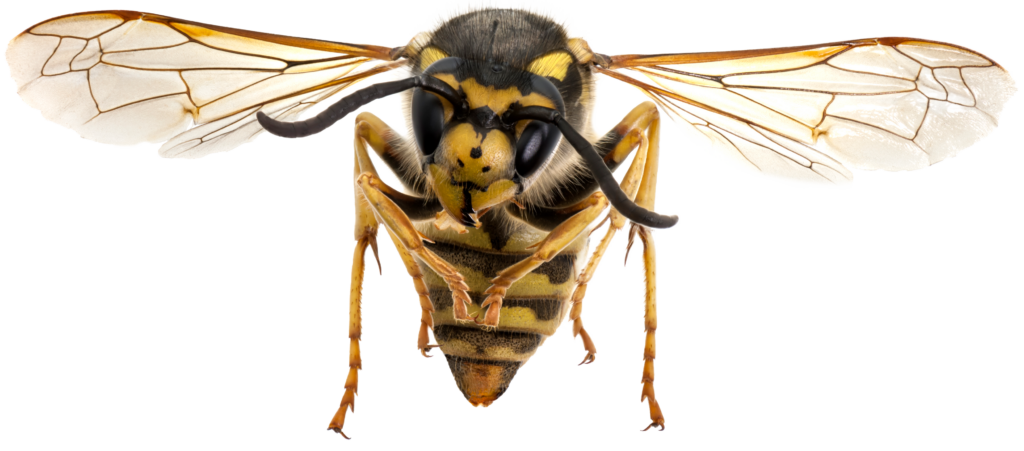
Autumn means colorful leaves falling, harvest time for prized fruits and vegetables, and a very special flourish of native blooms. This time of year is dominated by the asters, plants that have composite blooms that pack together many different flowers to make a single, large display. Think of a sunflower, composed of many separate flowers that make a single disk-shaped composite head. But, our most dominant autumn aster does not make a flat-faced flower like a sunflower, it makes a rich, linear display of hundreds of flowers in a line. It is the misunderstood goldenrod
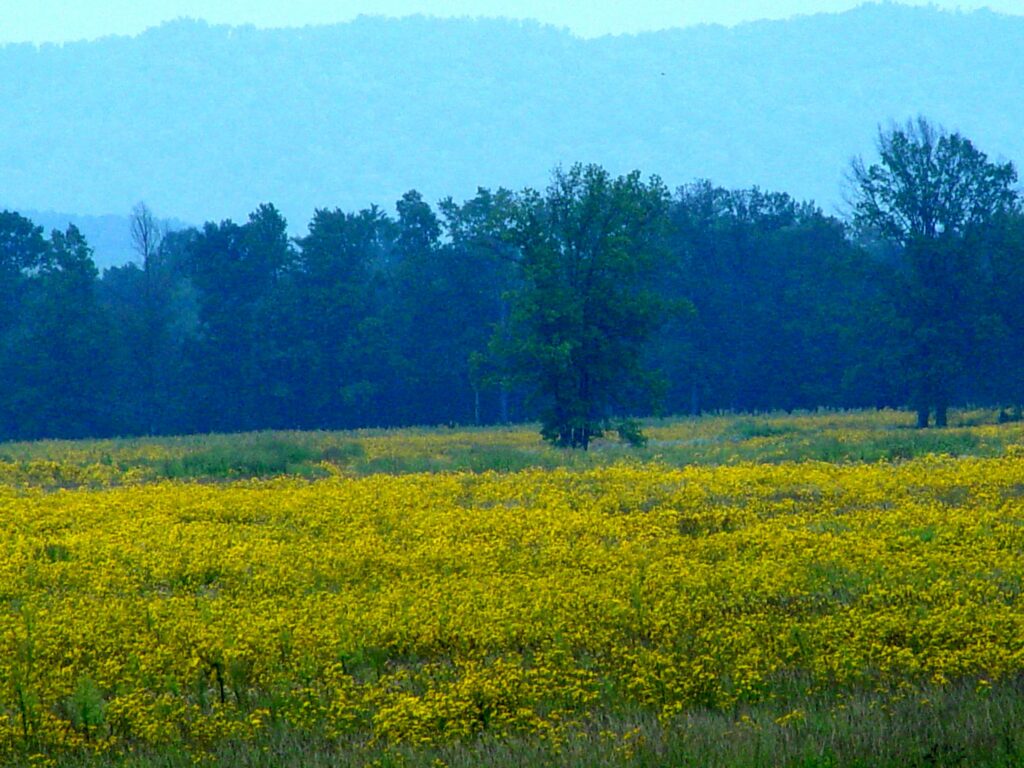
Goldenrod is taxonomically the genus Solidago, a genus of about 150 species of perennial herbs native to North America. Goldenrod was reputed to be a cure for many ailments, although validation of such claims can be rare (see blog on medicinal plants, April 22, 2022 “Herbalism and the Doctrine of Signatures”). On the other side, goldenrod is misunderstood as being a nuisance regarding hay fever, an allergy to pollen. The real guilty party is ragweed, which is very different, even if it is commonly confused.

Goldenrod is insect pollinated, and therefore the heavy or sticky pollen is only moved by insects. It doesn’t blow on the wind and cause respiratory problems. Goldenrod pollen is highly prized by insects that seek pollen because it has between 12% and 18% protein in their pollen, which is very high. Ham has about the same level of protein per ounce. Such a resource is important for pollinators to maximize food storage, and many insects harvest this pollen to get through the winter. About 50 native insects are known to rely on goldenrod, particularly moths, butterflies, bees, and wasps.

Goldenrods are not all benign, and the species most common in our area, Solidago canadensis, can take over large areas. Colonizing old fields after two or four years of growth, they spread by rhizomes, which are underground stems, and can cover huge areas. All plants from a single rhizome are identical, so the field of goldenrod is not thousands of plants, but really just one plant in thousands of stems. The density of stems and leaves chokes out all other plants, and it becomes a pure stand of goldenrod, very large, in just a few years
How S. canadensis forms such large stands is not entirely understood, but one possible hint is that other species of Solidago are toxic. In the western US, native Rayless Goldenrod (also called jimmyweed), is toxic to sheep, horses, cattle, and goats, none of which evolved in North America. According to researchers at New Mexico State University, poisoning is most common in late fall and winter.
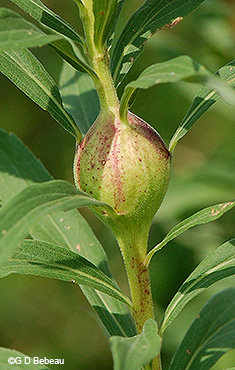
Large, dense stands of goldenrod eventually are discovered by their enemies. An easy one to detect is the gall Eurotsa solidagnis. These flies make large galls on the stems of the goldenrod. Soon, comes a particular beetle, the Goldenrod Leafminer, Microrhopala vittate. This native beetle will attack when the stand is more than about five years old, and they will decimate the population of goldenrod, setting it far back. Then, other plants grow well in the light gap. Soon, woody plants begin to fill the clearing. And the forest returns.
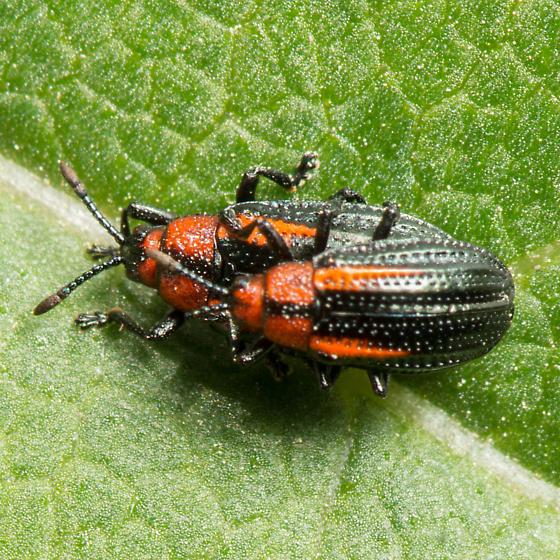
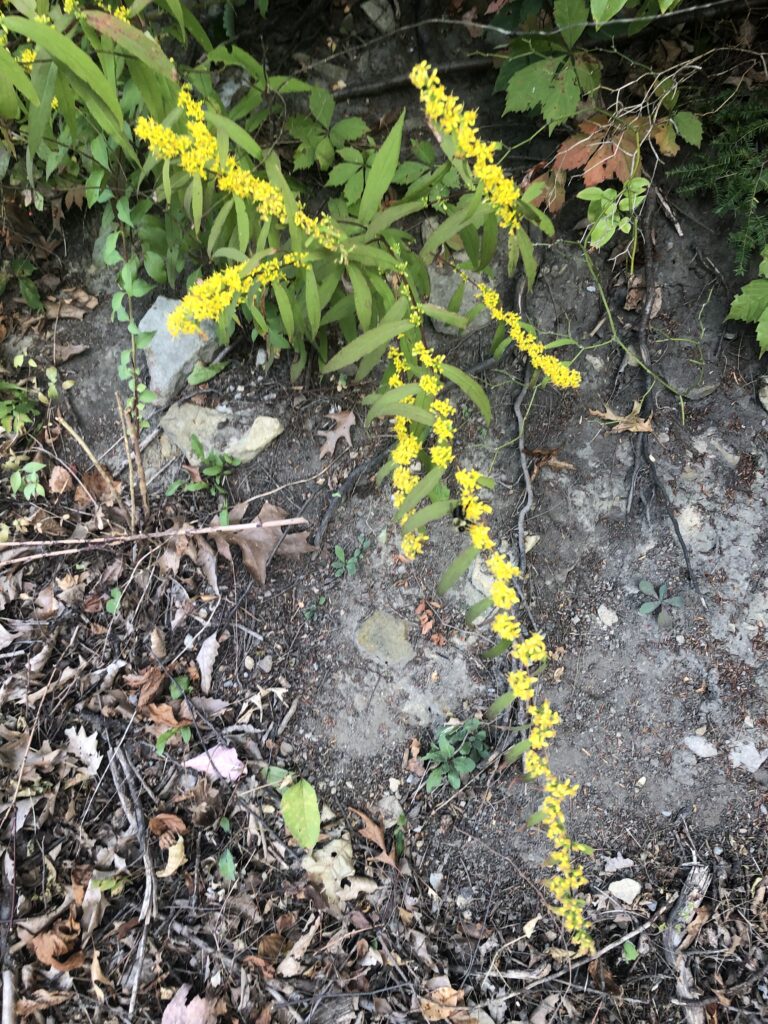
My favorite goldenrod is one of the few that will grow in the shade, and even in the forest. This species, S. caesia is unlike the S. canadensis we all know. Called “wreath-“ or “blue-stem-” goldenrod, it bears flowers all along its stem instead of at its apex. It has a low habit, rarely getting belt-high, and it does not form large stands as S. canadensis does. This would be a great plant to have in the garden in late summer. But, alas, it is not in the marketplace. Perhaps we should all ask our garden shops if they will stock it.
